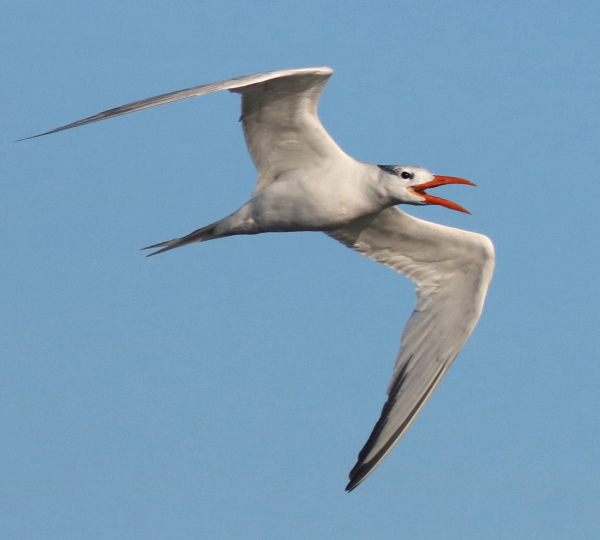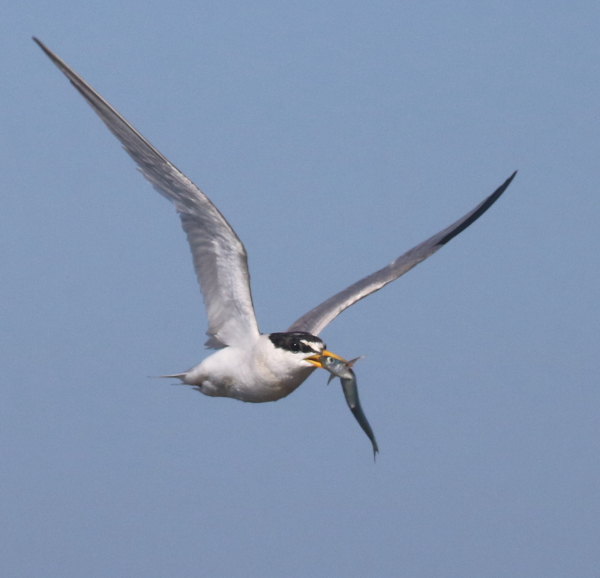
Terns are known for their fast direct flights, quick turns, and their ability to hover and dive as they pursue fish, which makes terns excellent subjects for taking and practicing action photos. There is an interesting variety of tern species to enjoy, and all of them are usually associated with water, which may be inland lakes and wetlands, ocean coasts, or winding rivers – worldwide – even in the Arctic. After all, there are Arctic Terns, which are known for their long-distance migrations from the Arctic to the Antarctic realm, probably the longest migration of any birds. In short, you can find terns almost anywhere there is water, and they provide challenging photo subjects, especially in flight.
As with any challenge, keep pursuing terns, keep trying to record their essence, and up your game as you get more opportunities to photograph them. Of course, different species offer new inspiration, so new species always excite me to try to collect more tern images. I was lucky to spend decades of spring and summer seasons near a major multi-species nesting colony of terns. Located on a small island on a coastal wetland adjacent to the Pacific Ocean, namely Bolsa Chica Wetlands, a favorite birding location on the north end of Huntington Beach, California. There I observed and photographed five species of interesting terns, including Elegant Terns, Royal Terns, Caspian, Forester’s, and the tiny endangered California Least Terns.

At Bolsa Chica, the best tern photo location is along the wooden boardwalk that bisects the waterway. Terns fly to fishing areas north of the boardwalk, then return to the nesting island to the south, so there is a steady parade of four species of terns flying back and forth. That’s how the photo action begins, and how it continues throughout the day. Pick your time, and enjoy the photo opportunities that pass by you.
The timing of your photo session should be dictated by good light, which requires a sunny day. But the best light is provided by the angle of the sunlight, which is best when the sun is below 45 degrees – in the morning or late afternoon. Then, limit your photo efforts to birds flying into and through the area that your shadow points toward. (I always double-check where my shadow is when photographing; then I make sure I position myself so my shadow points in the direction of my photo subjects.) This strategy will eliminate most shadows and provide ample illumination for your photos – not to mention plenty of light to ensure a fast shutter speed.
Shutter speed is paramount to stop a tern’s action in flight, when hovering, or when diving into the water to catch a small fish. The faster the shutter speed, the better your photos will turn out, I’d say. Aperture helps to keep moving birds within the area of focus, but f8 is always a good bet with the idea of zeroing in on the best option under given conditions.
The most important technical aspect of photographing terns in flight is to get a sharp focus. This will mostly be left up to the auto-focus option of your camera and lens combination. But auto-focus still requires your attention. You need to get the fast-moving tern into your view finder, touch your shutter button lightly to engage the focusing mechanism while following the terns’ movements – then engage the shutter button to take a photo or short series of photos. It’s a great exercise of hand to eye coordination, and practice definitely helps to improve your chances of getting pleasing images.
Have some fun too, and get in the rhythm of the scene. Adjust your tern photograph to the birds and landscape in your area. In my present location in Dakota, I look for opportunities to photograph Black Terns and Common Terns at prairie wetlands, but the same techniques apply: Find your spot to intercept hunting terns, or terns in transit from a feeding site to a nesting area. The camera work is similar as well – fast-paced action with an awareness for lighting, shutter speed, and hand-to-eye coordination using auto-focus.

Of course, there are plenty of other birds to photograph at the same time you may be concentrating on terns. But this time of year, “tern” is the word, and photographing them is an exceptional birding activity.
Article and photographs by Paul Konrad
Share your bird photographs and birding experiences at editorstbw2@gmail.com